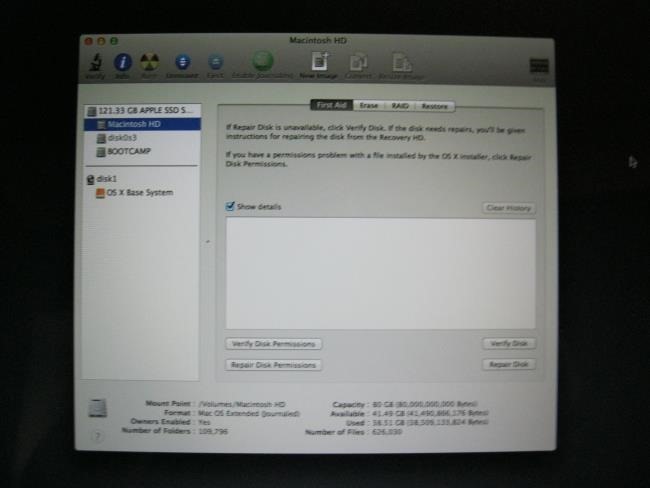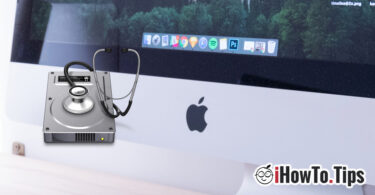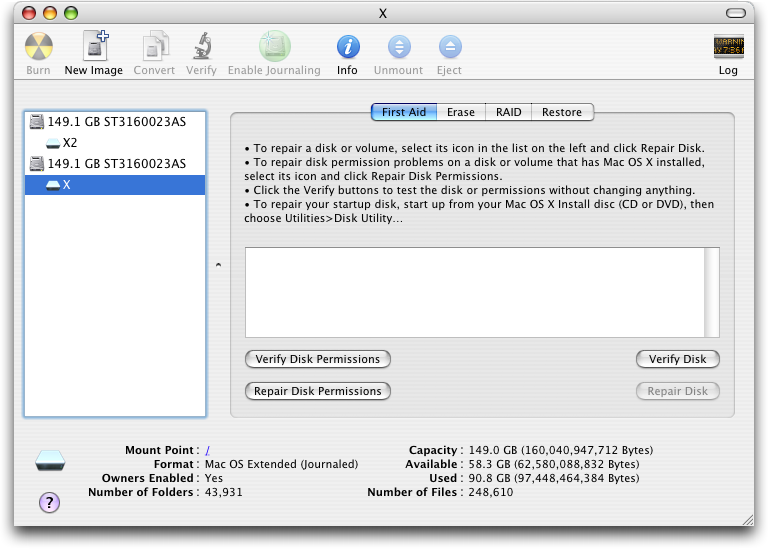
- Disk utility for mac download how to#
- Disk utility for mac download mac os x#
- Disk utility for mac download mac os#
- Disk utility for mac download full#
- Disk utility for mac download download#
The loss isn't permanent and the destroyed data can be recovered with the help of Recoverit for Mac. What does one do if some data is lost during cloning the mac's Drive? Don't worry. The contents of the drive will be copied and saved on the destination drive. Now drag and drop the destination Disk/Drive and leave it at the "Destination" field.Select the target drive, drag it and drop it at the "Source" field. Then at the Mac Disk Utility interface, click "Restore".Then hit "Erase" again and wait for the drive to remount on Mac.
Disk utility for mac download mac os#
Disk utility for mac download how to#
Part 2: How to Clone Mac's Drive using Disk Utility?Ĭurious to know how to clone a Mac's Drive with Disk Utility? Follow these simple steps and you're good to go: Some changes have been introduced in the Mac Disk Utility toolkit which makes more accurate cloning and copying data from the Drive. It works in blocks and does not involve file to file transfer. No important files, documents, or data are left behind using Mac Disk Utility. It is also capable of making an almost cut to cut an exact copy of the contents of the Drive. Say, for example, its "Restore" option does something what is called block copy and make the entire cloning process swifter. It has various new features that make it more suitable than the Time Machine. To start the discussion, Mac Disk Utility is free and also comes built-in with every Mac OS version. If Time Machine can do so much, then why consider using Mac Disk Utility? Time Machine keeps, hourly, daily and monthly backups all categorized separately.
Disk utility for mac download full#
When set-up for the first time, Time Machine performs a full backup of the Mac and its contents. Its unique feature is that it makes real-time backups to recover files easily whenever needed. Time Machine is a built-in application to back up and make an up-to-date copy of the data you save on the Mac. If you're wondering whether to use Time Machine or Mac Disk Utility to clone a Mac's Drive, let us clear the confusion for you. Difference Between Time Machine Backup and Cloning Hard Drive

Mac Disk Utility and its "Restore" functions can keep your data, important information, and files secure by literally copying it from your Mac Drive. Therefore, to prevent these and many more situations that may arise due to data loss, we recommend that you always know how to Clone a Mac's Drive using Disk Utility. Also, if important personal documents and business files are misplaced in the process, retrieving them is next to impossible. Old hard drive or one suffering from mechanical, firmware, or electrical error can permanently destroy your data, such as photos, documents, videos, music, and other files. No matter how new or of what quality your hard drive is, you cannot say for sure that it will last forever and never crash or suffer from a system failure.

To be precise, cloning of hard drives protects your important data which is under possible risk of physical destruction, loss, etc. "What is the need to clone a Mac's Drive?" This thought must have crossed your mind atlas once while using Mac.

Part 1: Why You Need to Clone a Mac's Drive?

Disk utility for mac download mac os x#
Starting with Disk Drill 3, anyone can create a bootable Mac OS X drive in a matter of minutes. It'll make your Mac boot from USB in just a few clicks. Disk Drill is by far the most convenient and up-to-date macOS bootable file rescue solution.
Disk utility for mac download download#
Set it aside, calm down and download a bootable data recovery app using any other computer. You can turn your computer off, remove the drive in question from the docking station, do whatever may be required to prevent any further utilization of that drive. The initial recommendation given to anyone who lost important data and would like to proceed with the data recovery is always to stop using the drive where the data was stored as soon as possible.


 0 kommentar(er)
0 kommentar(er)
